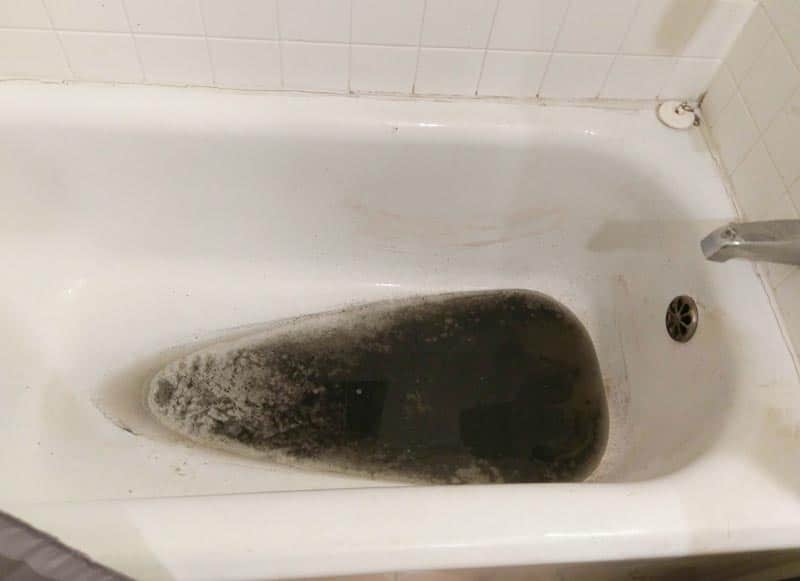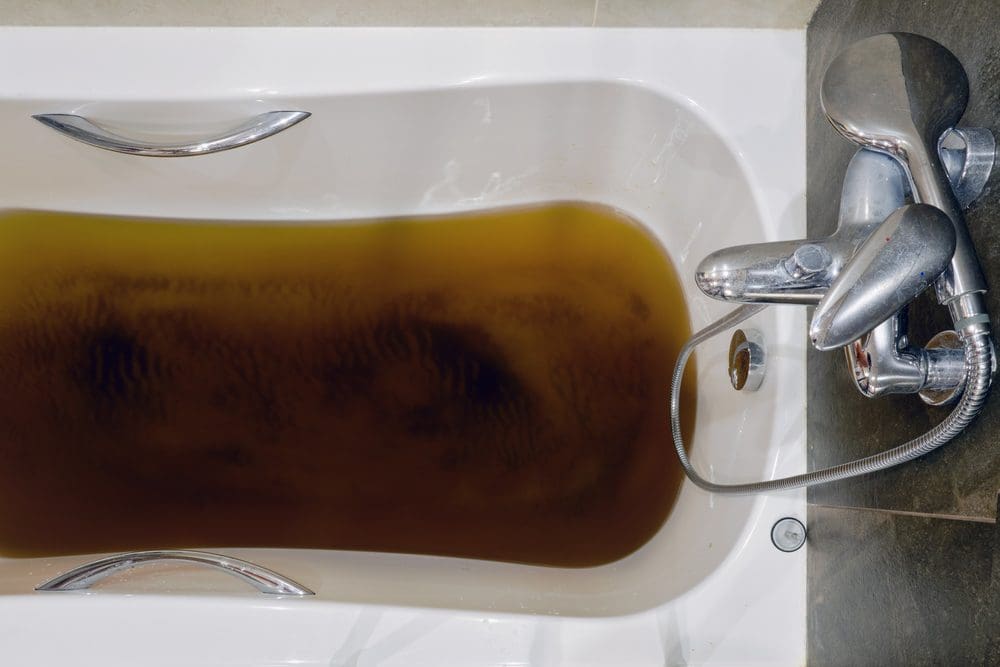Our Comprehensive Guide: Drainage Rising Through the Bathtub
Our Comprehensive Guide: Drainage Rising Through the Bathtub
Blog Article
Presented here underneath you will discover some helpful facts on the subject of Water Coming up Bathtub Drain.

Sewage backup in the bath tub can be a stressful and unhygienic problem for any kind of house owner. Not just is it inconvenient, however it additionally presents significant health dangers and shows underlying concerns with the plumbing system. Understanding why sewage is coming up with the tub is essential for taking suitable activity to attend to the trouble efficiently.
Introduction to the Issue
Typical Reasons for Sewer Backup
Clogs in the Sewer Line
One of one of the most usual causes of sewage back-up is a clog in the drain line. This can take place because of the buildup of debris, grease, or foreign objects in the pipelines, stopping appropriate flow and creating sewage to support right into your tub.
Tree Root Breach
Tree origins looking for moisture and nutrients can infiltrate sewer lines through little fractures or joints. With time, these origins can grow and broaden, creating significant damages to the pipelines and resulting in sewage backup issues.
Understanding the Problem
When sewage starts backing up right into the bathtub, it's a clear indication of a trouble with the drainage system. The wastewater that needs to be moving away from your home is rather finding its back right into your home, which can lead to substantial damage and health hazards.
Potential Causes
A number of variables can contribute to sewage back-up in the bathtub. From clogs in the sewer line to problems with the plumbing infrastructure, identifying the source is important for discovering a solution.
Aging Facilities
Older homes might have obsoleted plumbing systems that are much more at risk to rust, splits, and damage. As pipes age, they become much more prone to leaks and clogs, boosting the possibility of sewer back-up occurrences.
Heavy Rainfall or Flooding
Throughout periods of heavy rainfall or flooding, the drain system may end up being overloaded with excess water, causing back-ups and overflows. This can lead to sewage backing up into bathtubs and various other fixtures inside the home.
Indications of Sewer Back-up
Foul Odors
Unpleasant odors rising from drains or components, specifically in the washroom, may show sewage backup problems. These odors are typically solid and relentless, signifying a trouble that requires prompt interest.
Slow Draining Fixtures
Bath tubs, sinks, and toilets that drain pipes gradually or not whatsoever could be experiencing sewage backup. If multiple components are impacted concurrently, it's likely that the issue stems from a typical factor, such as the primary sewer line.
Gurgling Sounds
Strange gurgling or bubbling sounds originating from drains when water is running somewhere else in your home are indicative of air entraped in the plumbing system. This air accumulation can result from sewage backup and must be examined immediately.
Wellness Threats Related To Sewer Backup
Contamination of Supply Of Water
Sewer back-up can contaminate the supply of water in your house, posing a severe wellness risk to you and your family. Exposure to contaminated water can cause stomach problems, skin infections, and other illnesses.
Mold and mildew Growth
Dampness from sewer back-up can create perfect conditions for mold development in your home. Mold and mildew spores can intensify respiratory system issues and trigger allergic reactions in delicate individuals, making timely cleanup crucial.
Spread of Disease
Sewer has unsafe bacteria, viruses, and bloodsuckers that can create a series of illness, including hepatitis, cholera, and gastroenteritis. Entering contact with sewer or contaminated surfaces puts you in jeopardy of infection.
Tidying up After Sewer Backup
Sanitation Procedures
Thoroughly disinfect and sterilize influenced areas after sewer backup to remove unsafe germs and protect against mold and mildew growth. Usage ideal cleansing items and safety gear to make sure secure and efficient cleaning.
Remediation of Affected Areas
Fix any type of damages to flooring, walls, or components caused by sewer back-up. Depending upon the degree of the damage, you might need to change carpets, drywall, or various other materials to restore your home to its pre-loss problem.
Immediate Actions to Take
Turning Off Supply Of Water
In the event of sewage back-up, it's vital to turn off the water supply to stop further contamination and damages. Find the primary water shutoff valve in your home and closed it off up until the issue can be fixed.
Getting In Touch With a Professional Plumber
Taking care of sewage back-up is not a DIY job. Call an accredited plumber with experience in taking care of sewage-related concerns to analyze the situation and do needed repairs or cleanups.
Avoiding Contact with Infected Water
Till the sewer backup is resolved, prevent contact with polluted water to avoid the spread of germs and pathogens. Put on safety gear if you have to be in the affected location and wash your hands thoroughly afterward.
Safety nets
Regular Upkeep of Drain Lines
Arrange regular inspections and upkeep of your sewer lines to recognize and attend to potential issues before they rise right into significant troubles. This can consist of cleaning debris, checking for tree origin invasion, and repairing any broken pipelines.
Setting Up Bayou Shutoffs
Think about installing bayou shutoffs in your plumbing system to avoid sewer from flowing back into your home during durations of heavy rainfall or flooding. These valves immediately close when water draws back up, shielding your residential property from contamination.
Proper Disposal of Home Waste
Stay clear of flushing anything other than toilet tissue and human waste down the commode to stop blockages and obstructions in the sewer line. Dispose of grease, oil, and various other house chemicals effectively to minimize the danger of plumbing troubles.
Why is there sewage coming up from my bathtub?
These gas fumes, like hydrogen sulfide – the gas that leaves a rotten egg smell in its wake and is highly flammable and toxic – can be hazardous to your health. Sewage poses major health risks as it contains harmful bacteria and microorganisms that can be dangerous if exposed to them.
Sewage cleanup should be considered an emergency.
So, why is there sewage coming up from your bathroom? There are several common causes of a sewage backup.
The most common reason for sewage coming up through your bathroom is a clogged sewer line. All plumbing in your bathroom connects to a single drain pipe that leads to the sewer line under your house. This drain line carries all wastewater and sewage away from your home to the city’s sewer system.
When the sewer line becomes clogged or blocked, wastewater has nowhere to go but back toward your house. This results in sewage coming up through your drains, often starting with your tub or shower.
Another culprit may be the sewage ejector pump, which is used when a bathroom, laundry room or any other type of plumbing fixture is located below the level of the main sewer or septic line flowing from the house. Most commonly, ejector pumps are used in homes with basement bathrooms or laundry rooms.
When you experience sewage coming up through your bathtub, it’s always best to contact a professional. Attempts to fix a clogged sewer line without experience often lead to more plumbing damage.
Make sure that no one enters the affected area, and open as many windows as possible. Pre-treat the flooded area with small splashes of chlorine bleach. Wear protection gear like rubber gloves, a mask, and water-resistant coveralls.
https://www.shawlocal.com/the-herald-news/sponsored/2022/08/17/omega-plumbing-10199038/

Do you appreciate reading up on Water Coming up Bathtub Drain? Post a remark further down. We will be happy to listen to your thinking about this write-up. Hoping that you visit us again before long. Sharing is nice. You never know, you may just be doing someone a favor. We love your readership.
Schedule Service Now
Report this page